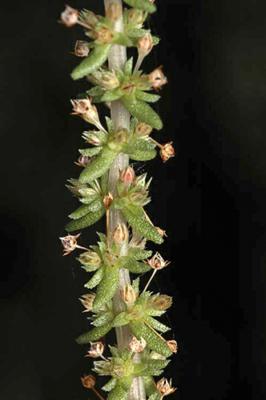
Common Name
Australian Stonecrop, Sieber Crassula
Family
Crassulaceae
Notes
Note that all records in the area covered by this key are from 1999 or before, pre-dating the Tolkien paper, which split off the annual species. Flora of South Australia describes the habitat thus. "Grows in crevices on wet rocks in mountains usually with an average yearly rainfall exceeding 600mm." It is extremely unlikely that this species occurs in the area covered by this key. The description below is that in Flora of South Australia.
Key in HR Tolkien (2002) The annual taxa of the Crassula sieberiana complex in South Australia South Australian Naturalist 76, pages 6-9
Perennial forb, sprawling, with branches to 20cm long, usually rooting along the stems. Leaves somewhat fleshy, opposite each other, 0.3-1.1cm long, 1-3mm wide, flat. Flowers small (less than 3mm across), cup-shaped, with 4 tiny yellow to red lobes, in clusters at the bases of the leaves. Endangered SA.
Description (as Crassula sieberana subsp. sieberana) in JP Jessop and HR Tolkien (editors) Flora of South Australia Part 1, State Herbarium of South Australia, 4th edition, South Australian Government Printing Division, Adelaide (1986) pages 426-427. There is no description in eFloraSA
The description and photo in G.M. Cunningham, WE Mulham, PL Milthorpe and J H Leigh (1981 and later printings) Plants of Western New South Wales page 342 is of the annual form of this species. Only the perennial form is still recognised as Crassula sieberiana.
PlantNET description: http://plantnet.rbgsyd.nsw.gov.au/cgi-bin/NSWfl.pl?page=nswfl&lvl=sp&name=Crassula~sieberiana Note that the PlantNET description still states that Crassula sieberiana can be annual or perennial, and that it does not recognise the subspecies that have now been recognised by the Council of Heads of Australian Herbaria to be separate species. However, there are PlantNET articles on Crassula colligata and Crassula tetramera, previously included in one of these subspecies, showing only maps and photos of preserved specimens, but with no description.



